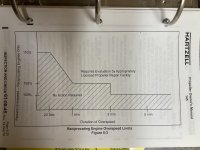I'm hoping that someone can give me an idea of how to deal with what I saw today.
In the first year of flying my RV7 with IO-360 and Hartzell CS prop, I consistently saw 2660 RPM on takeoff and climb, even after adjusting the governor high RPM screw. From what I've seen on Savvy, that's not uncommon.
On my first flight today, I saw a sold 2700 on takeoff and climb. I didn't understand it but I was happy to see it. On the return flight, I again saw 2700 on takeoff and climb. The issue came on a touch-and-go at destination. On the go, the RPM increased as high as 2784 and was abnormally high for 28 seconds, even as I was reducing the throttle.
Any thoughts? Thanks.
In the first year of flying my RV7 with IO-360 and Hartzell CS prop, I consistently saw 2660 RPM on takeoff and climb, even after adjusting the governor high RPM screw. From what I've seen on Savvy, that's not uncommon.
On my first flight today, I saw a sold 2700 on takeoff and climb. I didn't understand it but I was happy to see it. On the return flight, I again saw 2700 on takeoff and climb. The issue came on a touch-and-go at destination. On the go, the RPM increased as high as 2784 and was abnormally high for 28 seconds, even as I was reducing the throttle.
Any thoughts? Thanks.





